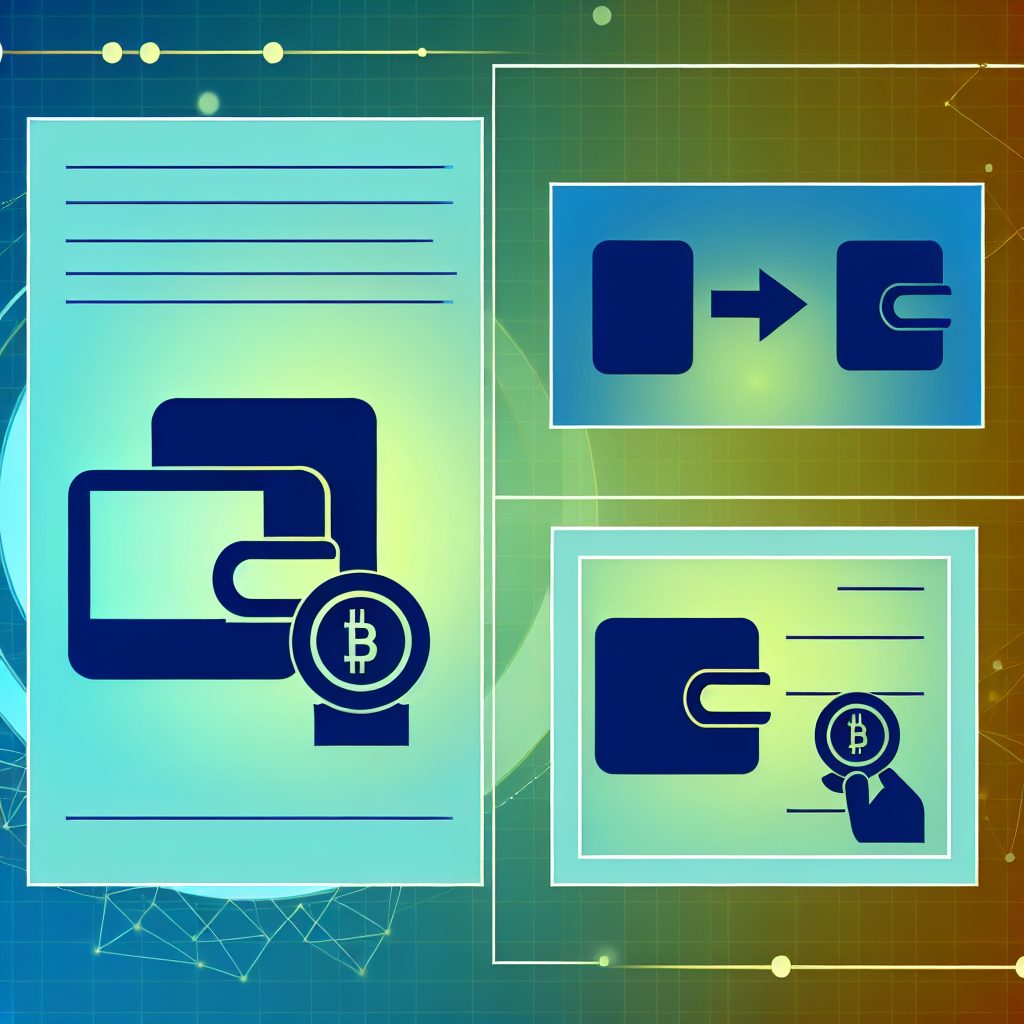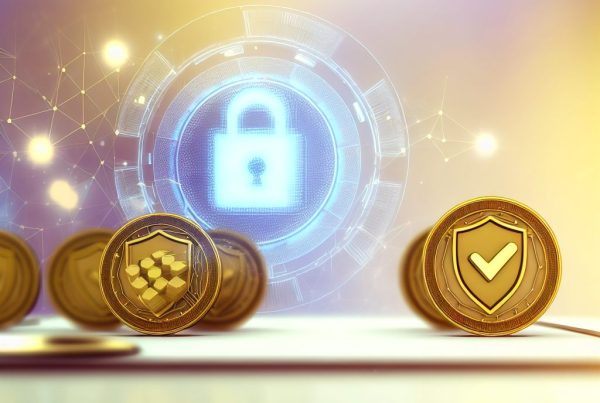Beginner’s Guide to Web3 Wallets
The rise of cryptocurrency has brought about a new era of digital finance, and at the heart of this revolution lies the concept of Web3 wallets. These wallets are essential tools for anyone looking to engage with decentralized applications (dApps), manage digital assets, and participate in the broader blockchain ecosystem. This guide aims to provide a comprehensive overview of Web3 wallets, their types, functionalities, and best practices for beginners.
What is a Web3 Wallet?
A Web3 wallet is a digital wallet that allows users to interact with blockchain networks and manage their cryptocurrency assets. Unlike traditional wallets, which may only store currency, Web3 wallets enable users to engage with decentralized applications, execute smart contracts, and participate in decentralized finance (DeFi) protocols.
Web3 wallets can be categorized into two main types: custodial and non-custodial. Understanding the differences between these types is crucial for making informed decisions about your digital assets.
Types of Web3 Wallets
1. Custodial Wallets
Custodial wallets are managed by third-party services that hold your private keys on your behalf. This means that while you can access your funds, you do not have complete control over them. Examples of custodial wallets include:
While custodial wallets offer convenience and user-friendly interfaces, they also come with risks, such as potential hacks or service outages.
2. Non-Custodial Wallets
Non-custodial wallets give users full control over their private keys and funds. This type of wallet is often recommended for those who prioritize security and autonomy. Examples include:

Non-custodial wallets require users to take responsibility for their security, including backing up their recovery phrases and safeguarding their private keys.
How to Choose the Right Web3 Wallet
Choosing the right Web3 wallet depends on several factors, including your level of experience, the types of assets you plan to manage, and your security preferences. Here are some key considerations:
- Security: Look for wallets that offer robust security features, such as two-factor authentication (2FA) and hardware wallet compatibility.
- User Experience: A user-friendly interface can make managing your assets easier, especially for beginners.
- Supported Assets: Ensure the wallet supports the cryptocurrencies and tokens you intend to use.
- Integration with dApps: If you plan to interact with decentralized applications, choose a wallet that seamlessly integrates with them.
Setting Up Your Web3 Wallet
Setting up a Web3 wallet is a straightforward process. Here’s a step-by-step guide to help you get started:
1. Choose Your Wallet
Decide whether you want a custodial or non-custodial wallet based on your needs and preferences.
2. Download and Install
If you opt for a software wallet, download the application from the official website or app store. For hardware wallets, purchase from a reputable vendor and follow the setup instructions.
3. Create Your Wallet
Follow the prompts to create a new wallet. This typically involves generating a recovery phrase, which is crucial for recovering your wallet if you lose access.
4. Secure Your Wallet
Store your recovery phrase in a safe place, preferably offline. Enable any additional security features offered by the wallet.
5. Fund Your Wallet
You can fund your wallet by purchasing cryptocurrency from an exchange and transferring it to your wallet address.
Using Your Web3 Wallet
Once your wallet is set up and funded, you can start using it to manage your digital assets. Here are some common activities:
1. Sending and Receiving Cryptocurrency
To send cryptocurrency, enter the recipient’s wallet address, specify the amount, and confirm the transaction. To receive funds, share your wallet address with the sender.
2. Interacting with dApps
Many Web3 wallets allow you to connect directly to decentralized applications. This enables you to participate in DeFi protocols, trade NFTs, and more.
3. Managing Tokens
Web3 wallets often support various tokens. You can add custom tokens by entering their contract address if they are not automatically displayed.
Security Best Practices for Web3 Wallets
<pSecurity is paramount when managing digital assets. Here are some best practices to enhance the security of your Web3 wallet:
- Use Strong Passwords: Create complex passwords and change them regularly.
- Enable Two-Factor Authentication: This adds an extra layer of security to your wallet.
- Keep Software Updated: Regularly update your wallet software to protect against vulnerabilities.
- Be Wary of Phishing Scams: Always verify URLs and avoid clicking on suspicious links.
- Consider Hardware Wallets: For long-term storage, hardware wallets provide enhanced security.
Common Misconceptions About Web3 Wallets
As the cryptocurrency landscape evolves, several misconceptions about Web3 wallets persist. Here are a few clarifications:
1. “Web3 Wallets Are Only for Experts”
While some features may seem complex, many wallets are designed with user-friendliness in mind, making them accessible to beginners.
2. “All Wallets Are the Same”
Different wallets offer varying features, security levels, and supported assets. It’s essential to choose one that fits your needs.
3. “I Don’t Need a Wallet If I Use an Exchange”
While exchanges provide wallets, they are custodial and may not offer the same level of security and control as a personal Web3 wallet.
Real-World Use Cases of Web3 Wallets
Web3 wallets are not just theoretical tools; they have practical applications across various sectors. Here are some notable use cases:
1. Decentralized Finance (DeFi)
Web3 wallets enable users to lend, borrow, and earn interest on their cryptocurrency holdings through DeFi platforms like Aave and Compound. Users can connect their wallets to these platforms to manage their assets directly.
2. Non-Fungible Tokens (NFTs)
Web3 wallets are essential for buying, selling, and storing NFTs. Platforms like OpenSea allow users to connect their wallets and trade digital art and collectibles seamlessly.
3. Gaming
Blockchain-based games often require players to use Web3 wallets to manage in-game assets. Games like Axie Infinity and Decentraland integrate wallet functionality for a seamless gaming experience.
Frequently Asked Questions (FAQs)
1. What is the difference between a hot wallet and a cold wallet?
A hot wallet is connected to the internet and is more convenient for daily transactions, while a cold wallet is offline and provides enhanced security for long-term storage.
2. Can I recover my wallet if I lose my recovery phrase?
If you lose your recovery phrase, you may not be able to access your wallet or funds. Always store it securely and consider using a hardware wallet for added security.
3. Are Web3 wallets safe?
Web3 wallets can be safe if you follow best practices for security, such as using strong passwords, enabling 2FA, and being cautious of phishing attempts.
4. Do I need to pay fees when using a Web3 wallet?
Yes, transactions on the blockchain often incur fees, known as gas fees. These fees vary depending on network congestion and the type of transaction.
Conclusion
Web3 wallets are essential tools for anyone looking to navigate the world of cryptocurrency and decentralized applications. By understanding the different types of wallets, how to choose the right one, and best practices for security, you can confidently manage your digital assets. As the cryptocurrency landscape continues to evolve, staying informed and adopting secure practices will be key to your success.
For the latest news and updates in the crypto space, consider visiting Bitrabo. You can also follow me on social media for more insights: X, Instagram, and Threads.
Disclaimer: This article is for informational purposes only and should not be considered financial advice. Always do your own research before investing in cryptocurrencies.
The Crypto Watchlist of the Week 🔎
Subscribe to receive expert-curated projects with real potential—plus trends, risks, and insights that matter. Get handpicked crypto projects, deep analysis & market updates delivered to you.


